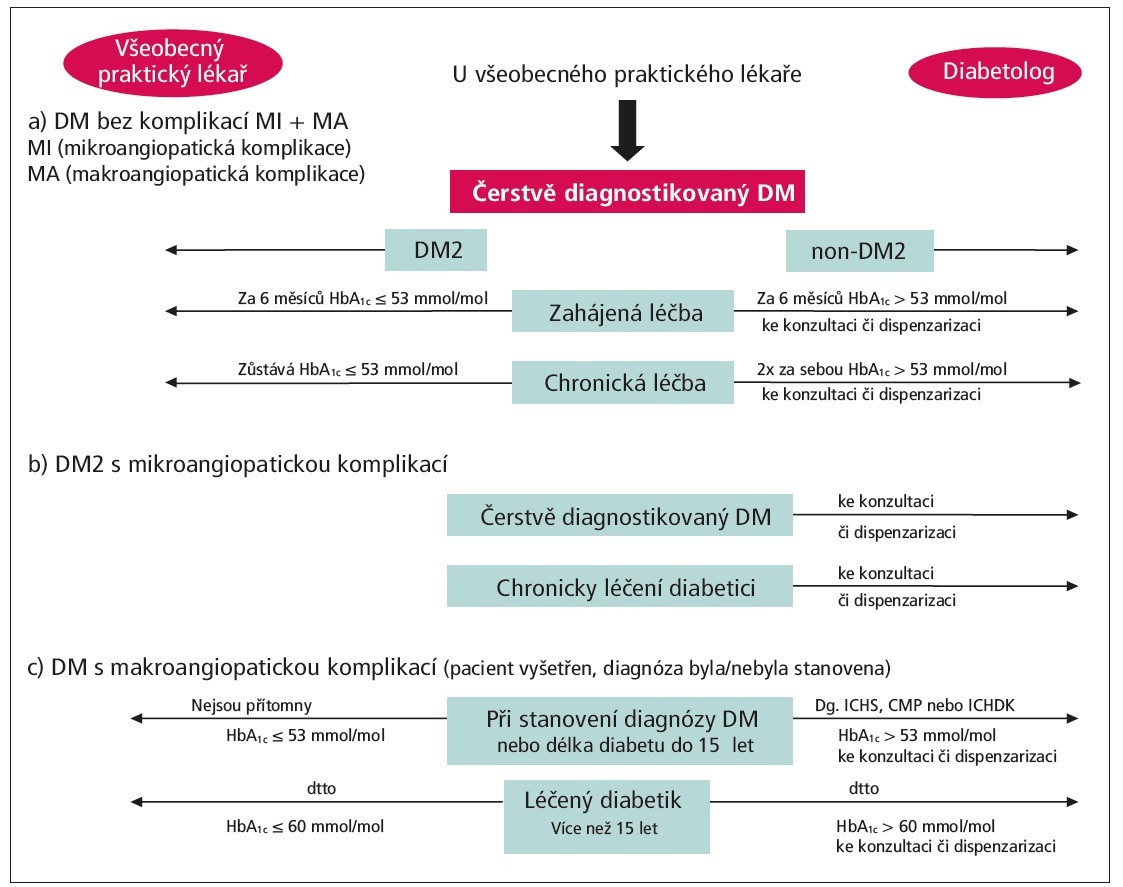Patient with Diabetes: When to Follow Up and When to Refer to a Specialist?
It is most often the general practitioner (GP) who first diagnoses diabetes. Whether during preventive check-ups, preoperative examinations, or based on the patient's clinical issues. After diagnosing diabetes, however, the GP faces a difficult decision: Will they continue to monitor and treat the patient themselves, or will they refer them to a diabetologist?
“Diabetes on Diet” Means Poorly Managed Diabetes
In the past, the treatment of diabetes, especially type 2 (T2DM), was very inconsistent. The only goal was to control blood sugar levels, and it was often noted in reports as “diabetes on diet”. This term should now be obsolete because there is no “mild diabetes” that can be managed exclusively with diet. The current goal of diabetes treatment is to prevent the development of macrovascular and microvascular complications and to improve the overall prognosis of the patient, thus, there is only well or poorly managed diabetes.
When to Refer a Patient to a Diabetologist
Today, we are much further along in general awareness and specific recommendations. Algorithms for screening, diagnosing, and treating diabetes are developed, as well as criteria for referring a patient to a diabetologist. The latest update of recommended procedures for general practitioners was published in 2020.
When deciding whether to refer a patient to a specialist, the evaluation of comorbidities and diabetes complications is crucial:
- If there is suspicion of a different type of diabetes than T2DM, the patient is referred to a diabetologist.
- If the patient has no associated complications (especially cardiovascular), the GP begins treatment with metformin, and if good compensation is achieved (i.e., HbA1c value ≤ 53 mmol/mol within 6 months of starting treatment), the GP continues with the patient's care. For a persistent HbA1c value > 53 mmol/mol, the patient is referred for consultation with a diabetologist.
- If a newly diagnosed diabetic also has proven microangiopathic complications, they should be referred for consultation/monitoring to a diabetologist for the initiation and stratification of therapy. After comprehensive assessment of all comorbidities and setting the therapy, the diabetologist may refer the patient back to the GP.
- If a newly diagnosed diabetic has proven microangiopathic complications but achieves an HbA1c value ≤ 53 mmol/mol (for patients with diabetes treated for more than 15 years, the threshold is HbA1c ≤ 60 mmol/mol), they can be monitored by the GP. For HbA1c > 53 mmol/mol, the patient is referred for consultation with a diabetologist.
- It is also advisable to refer a generally high-risk patient, even with well-controlled blood sugars, who suffers from heart failure or has increased cardiovascular risk, to a diabetologist. This patient could benefit from treatment with more modern preparations, which are usually subject to prescription restrictions for general practitioners.
This procedure can be further summarized in the following graphic from the updated recommended procedures of the SVL this year.
Fig. Algorithm for Monitoring Patients with DM (source: Karen I., Svacina S. Diabetes mellitus. Novelization 2020)

Conclusion
The primary role of the general practitioner in the care of patients with diabetes is especially the detection of asymptomatic patients and the treatment of uncomplicated type 2 diabetics. All type 1 diabetics and poorly compensated or cardiovascular-risk type 2 diabetics should be treated by a diabetologist.
(zem)
Sources:
1. Karen I., Svacina S. Diabetes mellitus. Novelization 2020. Recommended diagnostic and therapeutic procedures for general practitioners. Center for Recommended Procedures for General Practitioners, Society of General Medicine CLS JEP, Prague, 2020. Available at: www.svl.cz/files/files/Doporucene-postupy/2020/DIABETES-MELLITUS-2020.pdf
2. Srbova E. Pharmacotherapy of type 2 diabetic in a general practitioner's office in 2020. proLekare.cz, Oct 1, 2020. Available at: www.prolekare.cz/tema/diabetes/detail/farmakoterapie-diabetika-2-typu-v-ordinaci-praktickeho-lekare-v-roce-2020-124067
Did you like this article? Would you like to comment on it? Write to us. We are interested in your opinion. We will not publish it, but we will gladly answer you.
